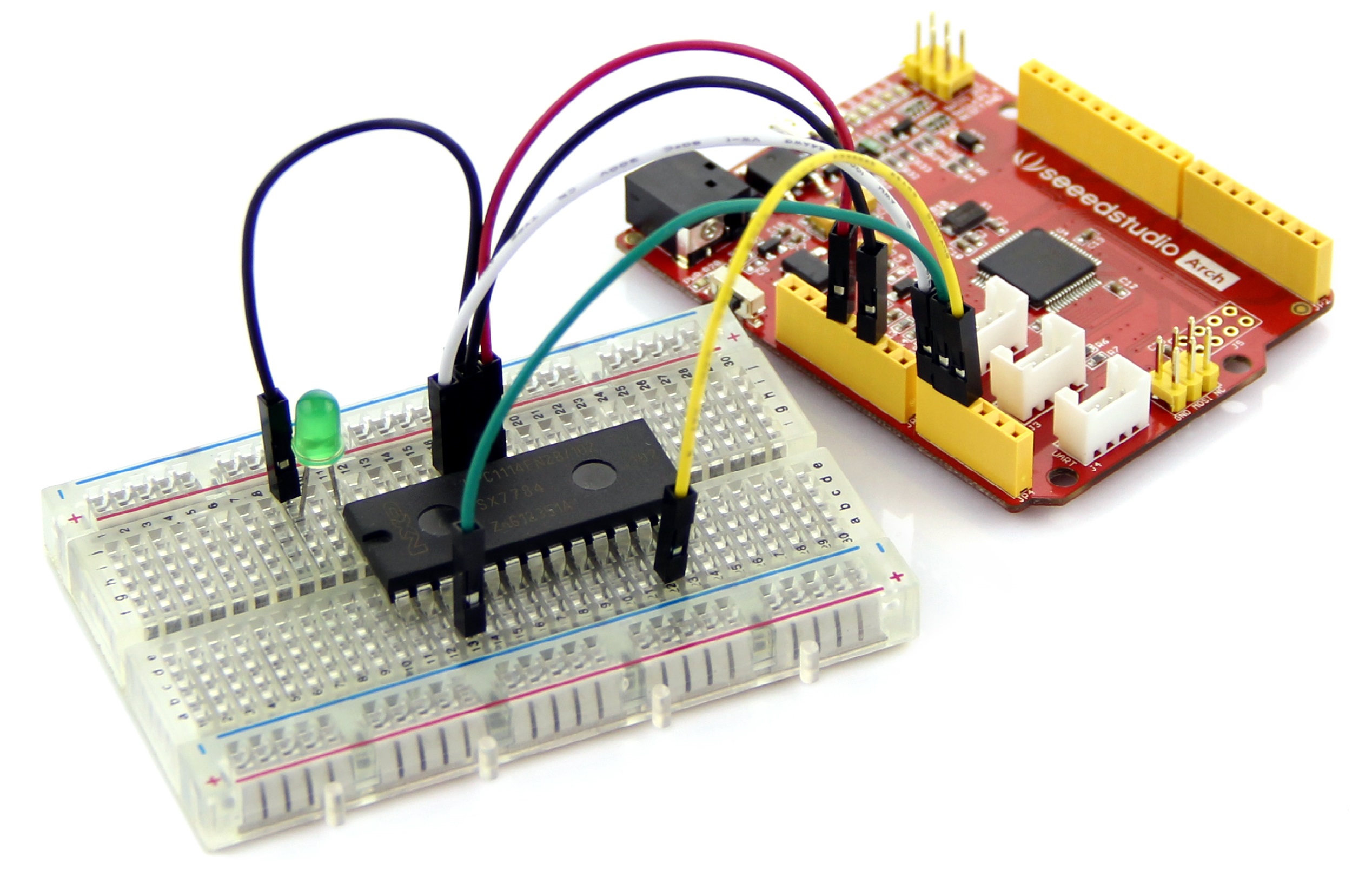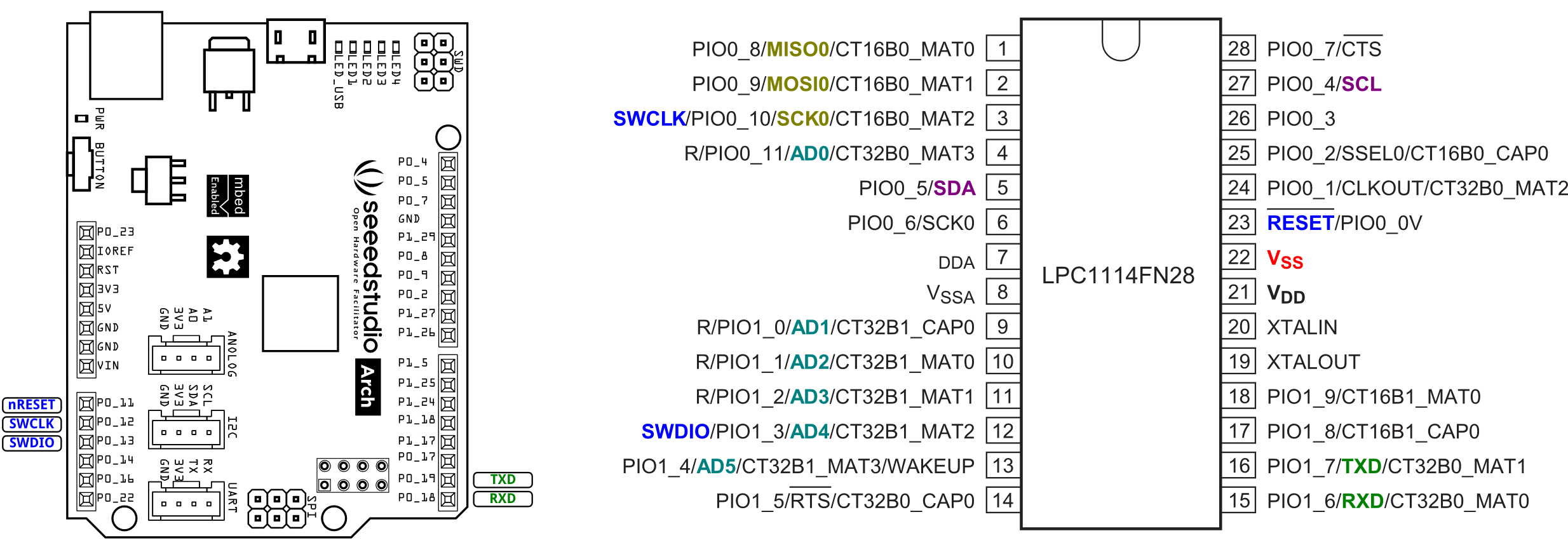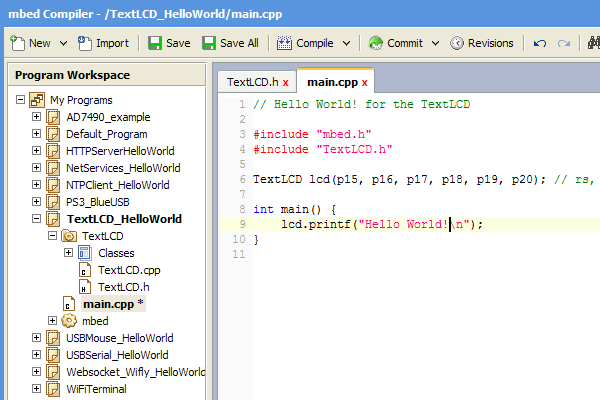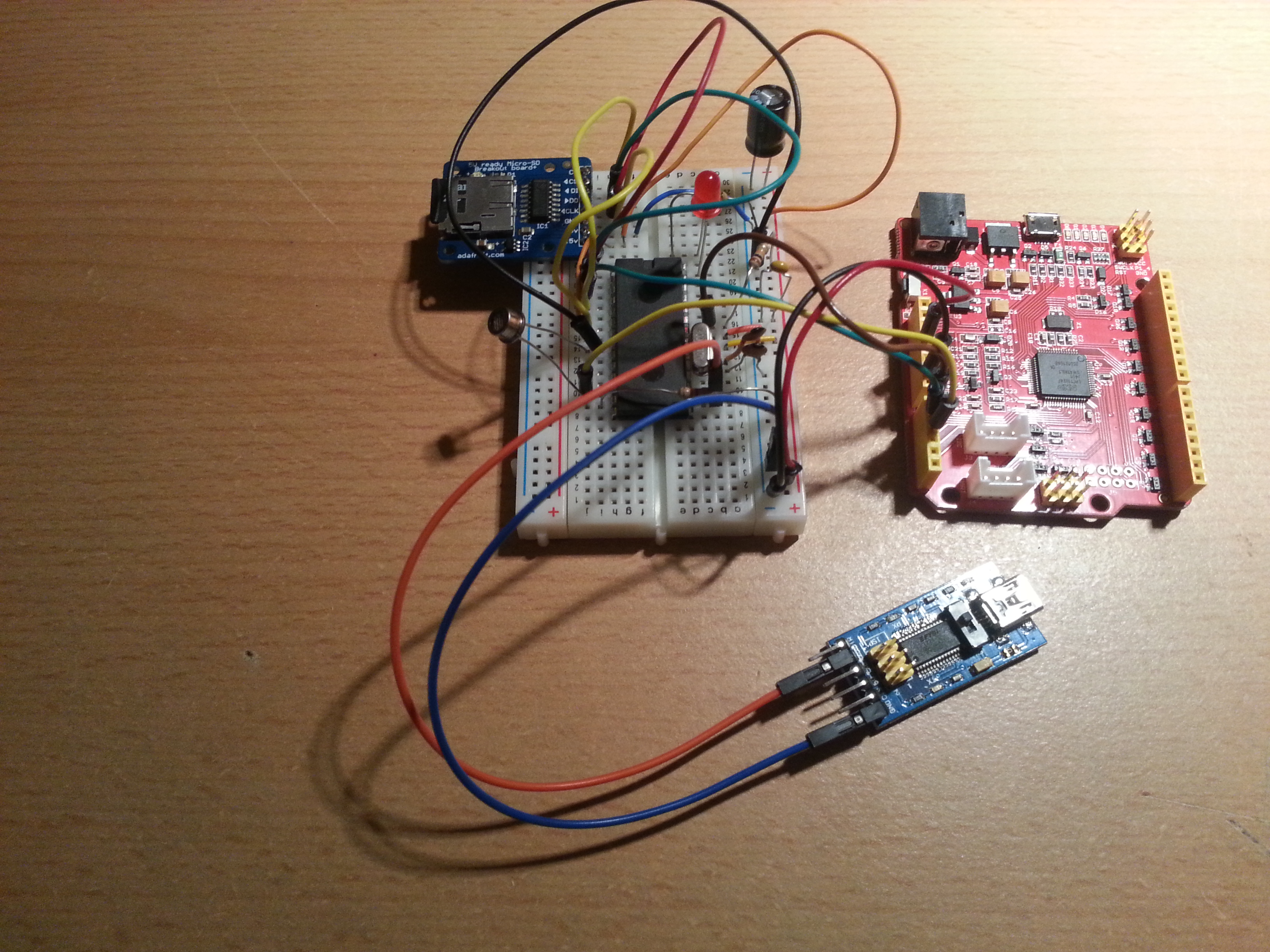Beginning LPC1114FN28 with Arch
Page last updated
11 Mar 2014, by
 Seeed Studio
Seeed Studio.
7
replies
ARCH,
LPC1114FN28
It's cool that LPC1114FN28 based on ARM Cortex M0 uses DIP package. We enjoy playing LPC1114 with a breadboard, wires, LEDs and etc. And programming LPC1114 is quite easy with an Arch as an mbed interface. To download a new binary into LPC1114 is just to drag-n-drop the binary file into "MBED" drive.

Hardware
Use Arch as an mbed interface and connect Arch with LPC1114 through SWD interface or UART interface.

| Arch | Pin Function |
| P0_11 | nRESET |
| P0_12 | SWCLK |
| P0_13 | SWDIO |
| P0_18 | RX |
| P0_19 | TX |
Turn an Arch into an mbed interface
Arch is not just an mbed enabled development board for rapid prototyping, but also an mbed interface(SWD/JTAG debug adapter, USB2UART bridge). Turning an Arch into an mbed interface is quite easy.
- Download mbed interface firmware for Arch.
- Connect Arch with PC, long press Arch's button and replace firmware.bin with the new firmware in "CRP DISABLD" drive.
- Quick press the button. "MBED" drive will pop up.
- Install the mbed interface driver to enable USB2UART function
Development
- In "MBED" drive, there is a "MBED.HTM" file which will lead to mbed.org.
- Add LPC1114FN28 to mbed compiler.
- On mbed compiler, it's easy to write code, import libraries and share programs.
- Compile and download a binary into "MBED" drive. The program will run!

Resources
7 comments on Beginning LPC1114FN28 with Arch:
insanity_wolf
#
09 Feb 2014
This is a great concept of an mbed interface for a DIP chip without USB bootloader. Some weird problems occurred though:
It worked for me only a couple of times. I have set everything up exactly as described in the article above and managed to flash an SD data logger program on an LPC1114FN28, which worked perfectly fine. After debugging and flashing it a couple of times and it stopped working out of a sudden.
The strangest thing is that a simple blinky program can still be flashed on the LPC1114 and still works (also with different GPIO pins), but the more complicated things involving peripherals like UART or SPI just don't. Since I own a second chip I started using it and exactly the same problem occurred again.
Is it possible that the chips got bricked in some way?
Does anyone have an idea or had similar trouble with this setup?
Arthur
Hi Arthur,
I just fix the bug and update the interface firmware. Re-download the firmware and have a try. : )
Best,
Yihui
insanity_wolf
#
11 Feb 2014
Dear Yihui,
thank you very much for fixing the Arch firmware! My LPC1114 breadboard data logger is working perfectly fine now :)

All the best,
Arthur
insanity_wolf
#
12 Feb 2014
Hi Yihui,
thank you for the great advice. I tried it out and it worked immediately. Very convenient to have SWD and UART on one device...
Learned something again ;) Looking forward to building more exciting stuff with those ARM chips.
Cheers,
Arthur
Experiment626
#
10 Jun 2014
Hi Yihui,
If I were to use the LPC11U24FHI33/301 (package: HVQFN33 [5x5]) with the ID 0x2988 402B instead of the LPC11U24FBD48/401 (package LQFP48) with the ID 0x2980 002B as the interface processor, would there need to be a change to the interface firmware? Despite the fact that the processors are basically the same, I am encountering a reason to believe that, not only is the Target ID important, but the interface ID is equally important.
Sincerely,
Aron
Please log in to post comments.





This is a great concept of an mbed interface for a DIP chip without USB bootloader. Some weird problems occurred though: It worked for me only a couple of times. I have set everything up exactly as described in the article above and managed to flash an SD data logger program on an LPC1114FN28, which worked perfectly fine. After debugging and flashing it a couple of times and it stopped working out of a sudden. The strangest thing is that a simple blinky program can still be flashed on the LPC1114 and still works (also with different GPIO pins), but the more complicated things involving peripherals like UART or SPI just don't. Since I own a second chip I started using it and exactly the same problem occurred again. Is it possible that the chips got bricked in some way?
Does anyone have an idea or had similar trouble with this setup?
Arthur